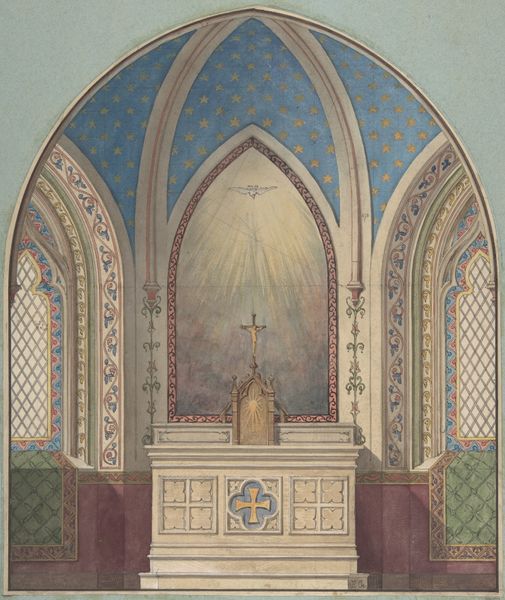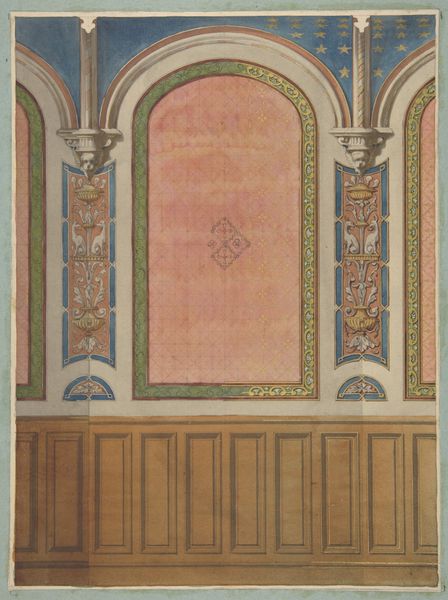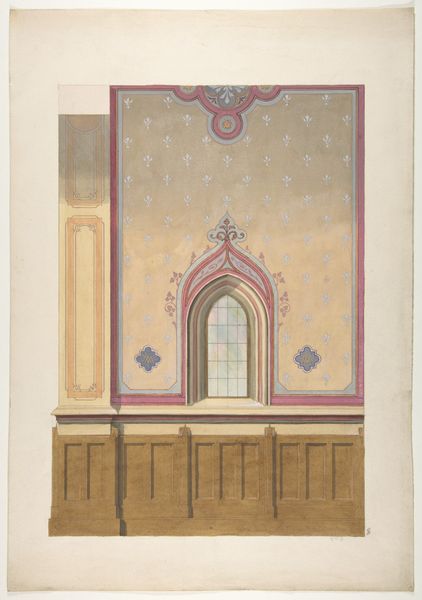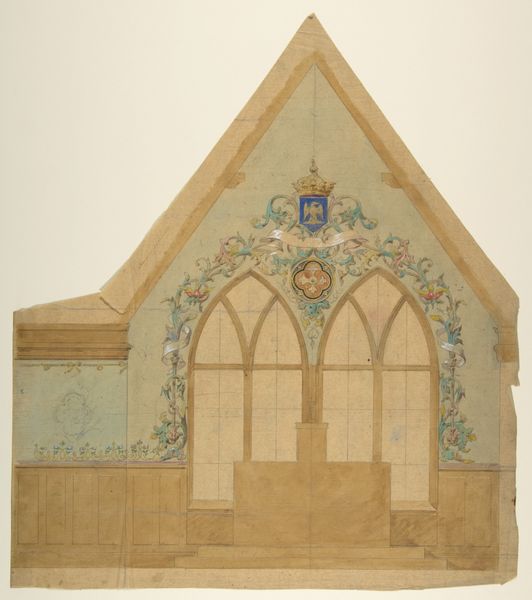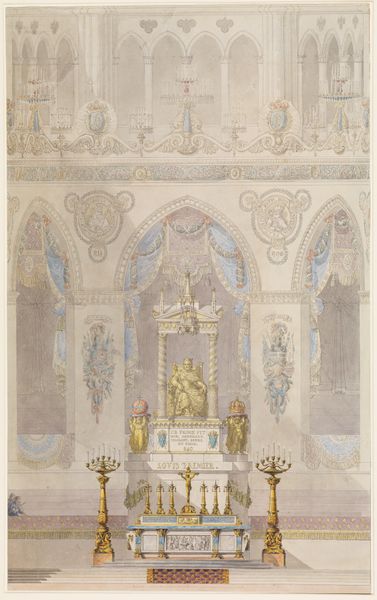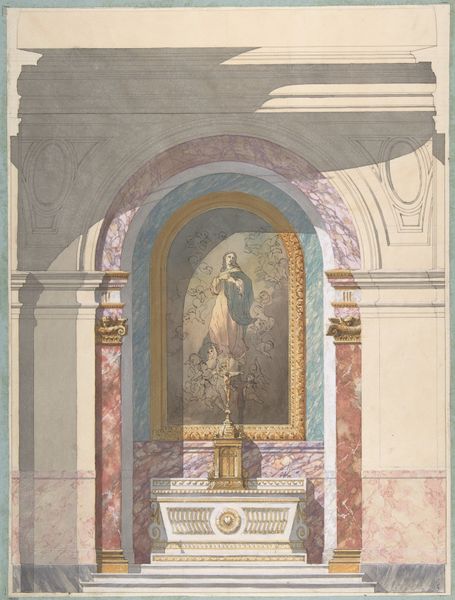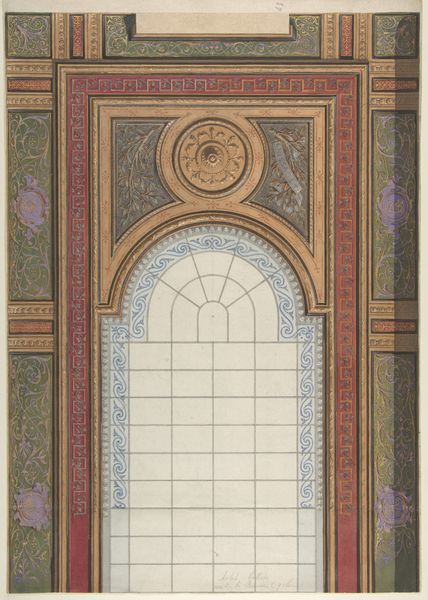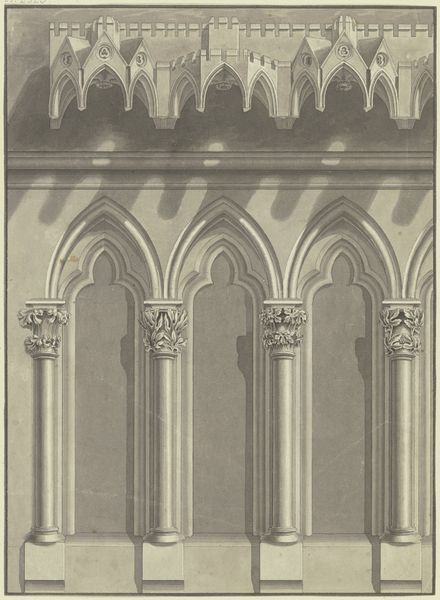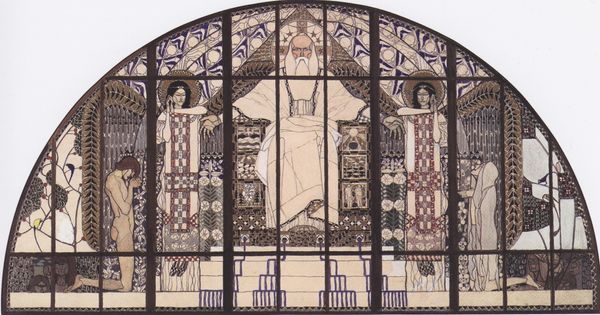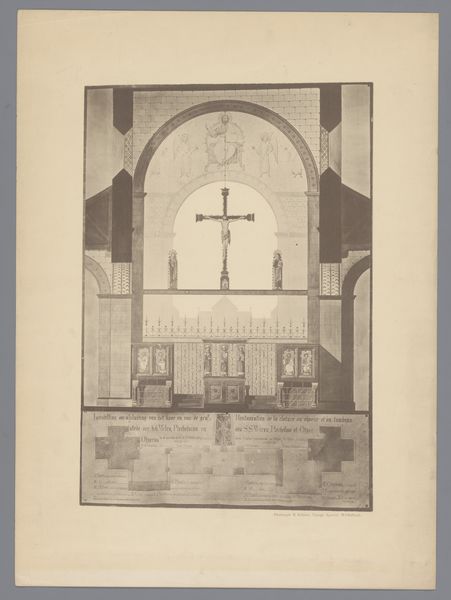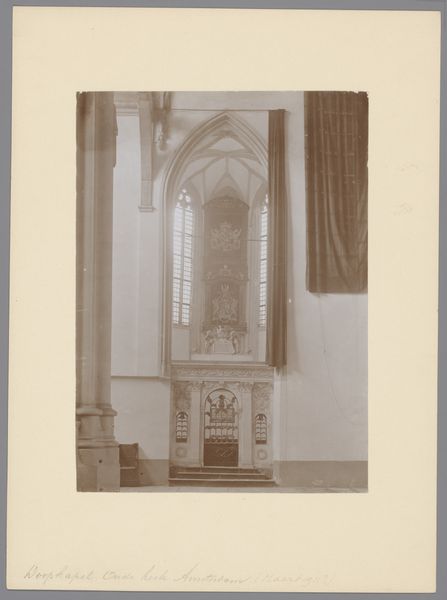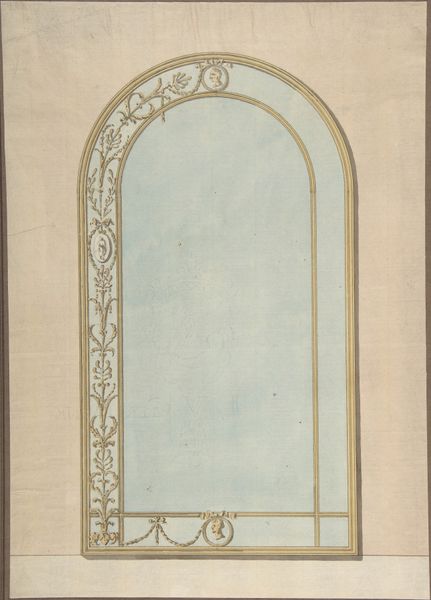
Elevation of a design for an altar and painted wall decoration 1845 - 1900
0:00
0:00
Dimensions: sheet: 24 1/8 x 18 11/16 in. (61.2 x 47.5 cm)
Copyright: Public Domain
Editor: Here we have Jules-Edmond-Charles Lachaise's "Elevation of a design for an altar and painted wall decoration," made sometime between 1845 and 1900. It’s a mixed media piece incorporating drawing, tempera, and print, a somewhat unusual combination. I am struck by its almost theatrical staging – a design, not necessarily meant to be built. What do you see here? Curator: This piece, for me, is a fascinating example of how the means of production dictate the form. The use of printmaking in combination with tempera suggests a potential need for replicability, perhaps for a wider audience than a single, hand-painted design would reach. Consider the social context: Were these designs intended for wealthy patrons or for broader circulation to less affluent churches? Editor: That’s interesting. I hadn’t considered the distribution aspect. So, the materials suggest something about its intended use and audience? Curator: Exactly. The choice of tempera, a relatively affordable and readily available medium, further emphasizes this potential accessibility. Notice also the recurring motifs— the stars, the patterned wallpaper. Were these prefabricated, easily reproduced elements that democratized design? Or perhaps sourced locally, reflecting regional aesthetic values and craftsmanship? Editor: I see what you mean. Thinking about it that way, it is not just a pretty drawing. Were these Gothic and Neoclassical art movements easily accessible or was one class of materials or labor preferable to another? Curator: That's a very perceptive question! There was in fact significant tension at the time. Examining which material supported these different artistic ideals will help determine how socioeconomically disparate they actually were. Editor: So, analyzing the materiality really opens up a whole avenue of understanding the social context of the artwork's creation. It is great that this examination challenges our original boundaries between art and craft by examining labor. Thank you! Curator: Precisely! It highlights the vital connection between the artwork and the culture that produced it. I find myself reconsidering what "high art" truly means when viewed through this lens.
Comments
No comments
Be the first to comment and join the conversation on the ultimate creative platform.
